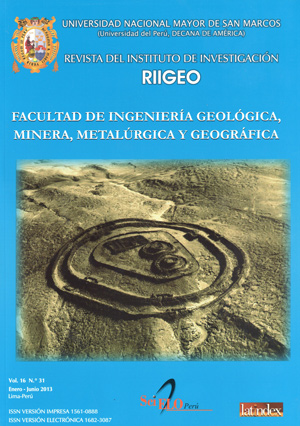Environmental radiation in the Cusco-Machu Picchu route
DOI:
https://doi.org/10.15381/iigeo.v16i31.11288Keywords:
Natural radioactivity, CuzcoAbstract
The global average background dose for a human being is about 2.4 millisievert (mSv) per year. This exposure is produced mainly by cosmic radiation and radioactive materials that are naturally in the environment and are the reason why the level of natural radiation of the background varies from one zone to another in some areas and that this level is significantly higher than the average [3]. Such areas include Ramsar in Iran, Guarapari in Brazil, Kerala in India, the northern Flinders Ranges in Australia and Yangjiang in China. In order to know the background radiation in our country, and their possible impacts on living things continue along these lines, the present study was conducted environmental ionizing radiation measurements along routes linking Cuzco to Machu Picchu. In these locations 10 measurements were made at random locations away at least 6 meters of buildings to a meter from the ground with a Geiger-Müller detector Portable Gamma- Scout brand, calibrated (Fachhochschuler Mannheim) at equivalent doses (nSv / h). Calca area is the highest reading with 478 nano Sv / h, 470 followed by Ollantaytambo, Pisac high 440, 396 Poroy, Calca 388 Machupichu 343, 342 Pisac, Aguas Calientes 298 and others totaling from 29 localities.
Downloads
Published
Issue
Section
License
Copyright (c) 2013 Julio Manosalva B.

This work is licensed under a Creative Commons Attribution-NonCommercial-ShareAlike 4.0 International License.
AUTHORS RETAIN THEIR RIGHTS:
a. Authors retain their trade mark rights and patent, and also on any process or procedure described in the article.
b. Authors retain their right to share, copy, distribute, perform and publicly communicate their article (eg, to place their article in an institutional repository or publish it in a book), with an acknowledgment of its initial publication in the Rev. Inst. investig. Fac. minas metal cienc. geogr.
c. Authors retain theirs right to make a subsequent publication of their work, to use the article or any part thereof (eg a compilation of his papers, lecture notes, thesis, or a book), always indicating the source of publication (the originator of the work, journal, volume, number and date).






